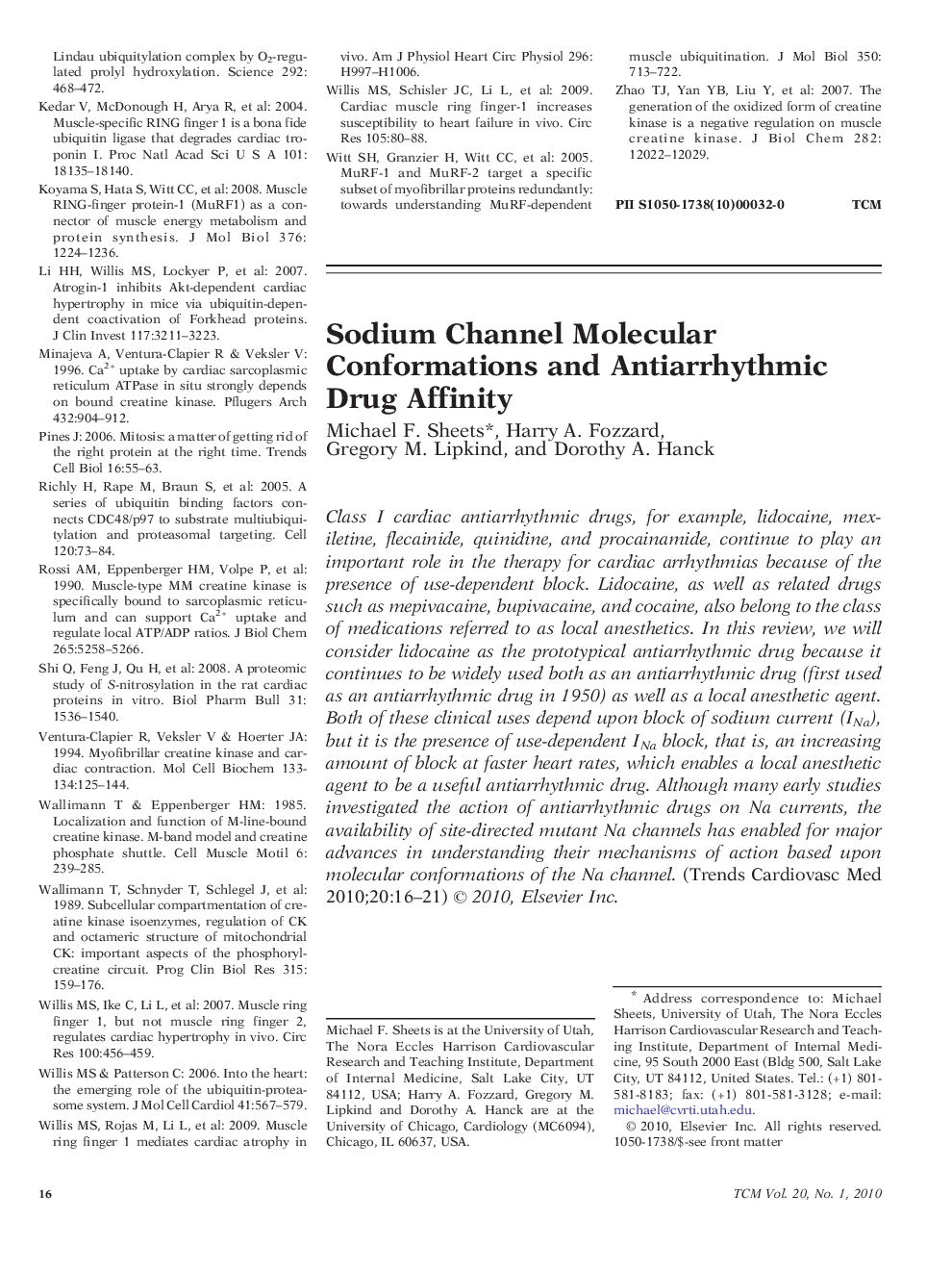| کد مقاله | کد نشریه | سال انتشار | مقاله انگلیسی | نسخه تمام متن |
|---|---|---|---|---|
| 3030692 | 1183675 | 2010 | 6 صفحه PDF | دانلود رایگان |

Class I cardiac antiarrhythmic drugs, for example, lidocaine, mexiletine, flecainide, quinidine, and procainamide, continue to play an important role in the therapy for cardiac arrhythmias because of the presence of use-dependent block. Lidocaine, as well as related drugs such as mepivacaine, bupivacaine, and cocaine, also belong to the class of medications referred to as local anesthetics. In this review, we will consider lidocaine as the prototypical antiarrhythmic drug because it continues to be widely used both as an antiarrhythmic drug (first used as an antiarrhythmic drug in 1950) as well as a local anesthetic agent. Both of these clinical uses depend upon block of sodium current (INa), but it is the presence of use-dependent INa block, that is, an increasing amount of block at faster heart rates, which enables a local anesthetic agent to be a useful antiarrhythmic drug. Although many early studies investigated the action of antiarrhythmic drugs on Na currents, the availability of site-directed mutant Na channels has enabled for major advances in understanding their mechanisms of action based upon molecular conformations of the Na channel.
Journal: Trends in Cardiovascular Medicine - Volume 20, Issue 1, January 2010, Pages 16–21